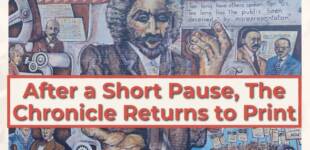WSTA gets more hybrid buses
BY TODD LUCK
THE CHRONICLE
With the addition of more new hybrid vehicles, 75 percent of the Winston-Salem Transit Authority’s fleet is hybrids, giving it one of the highest percentages for alternatively-fueled fleets in the country.
WSTA Director Art Barnes said he’s proud of the Transit Authority’s devotion to vehicles that pollute less and conserve fuel.
“We made a conscious decision to have a fleet that would address environmental concerns,” said Barnes.
WSTA is adding 12 new hybrid buses and six smaller buses for Trans-Aid. This represents an $8.8 million investment in the WSTA. Federal funds cover 85 percent of the cost, with state and city money covering the rest.
WSTA began transitioning to hybrids in 2010 and has been using Gillig hybrid electric buses. This year’s new buses are New Flyers. WSTA Director Art Barnes said the WSTA went with another manufacturer because New Flyer could deliver the buses within nine months while Gillig was going to take at least 18 months. He said the quicker turnaround meant the buses
would be in use before the WSTA makes it transition to the new routes that begin next year.
Barnes said hybrids, which use battery power for lower speeds and diesel fuel for higher speeds, have served WSTA well. The older model buses get 3.5 miles to the gallon while the hybrids get 5-6 miles per gallon. This equaled a $400,000 savings on gas in 2010. They also save on maintenance, especially on brakes. He said there are no immediate plans to get more hybrids, but moving to all hybrid buses remains a long-term goal.
The New Flyers are largely the same as the Gillig buses. They’re the same size and seating capacity. The New Flyers do have rear doors that are four inches wider, which will make it easier for passengers to exit. They also have fold-out wheel chair ramps, which should be faster and more efficient than the wheelchair lifts found on other buses.
Barnes said he’s been impressed with the New Flyers that have been used for the last couple weeks and expects the rest to begin serving passengers soon.
“They’ve worked out well,” said Barnes. “They’ve proven to be quite dependable.”
The buses, which cost $600,000 each, are a long-term investment. Buses have a lifespan of 13 years before a transit authority qualifies for federal funds to replace them.








